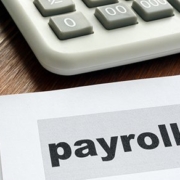The Partner Employee Issue
- Learn about the partner employee issue.
- Find information about self-employment tax.
If your partnership has been treating you and other business partners as employees of a disregarded entity owned by the partnership so the partners can participate in employee benefit plans and receive other employee benefits, you’d better read this. Tax regulations (1) issued by the IRS take aim at this partner employee practice and aim to put a stop to it.

Background on the Partner Employee Issue
We treat a disregarded entity as a corporation (2) for the purposes of employment taxes. Therefore, the disregarded entity, rather than the owner, is considered to be the employer of the entity's employees for the purposes of employment taxes. However, we do not treat the owner as an employee. Instead, the owner pays self-employment tax on the net earnings from self-employment resulting from the disregarded entity's activities.
At one time the regulations did not include an example where the disregarded entity is owned by a partnership. Because of that, some taxpayers incorrectly interpreted the regulations to permit partners to participate in certain tax-favored employee benefit plans as employees rather than owners as long as they were employed by a disregarded entity. This is contrary to the IRS’s intention.
The IRS and the Treasury noted that regulations did not create a distinction between a disregarded entity owned by an individual (a sole proprietorship) and a disregarded entity owned by a partnership in the application of the self-employment tax rule. Rather, the IRS has long held (3) that:
- A bona fide member of a partnership is not an employee of the partnership, and
- A partner who devotes time and energy to conducting the partnership's trade or business, or who provides services to the partnership as an independent contractor, is considered self-employed and is not an employee.
To resolve this issue, the IRS issued regulations modifying the original regulations to clarify the rule that an entity disregarded for self-employment tax purposes applies to partners in the same way that it applies to a sole proprietor owner. Accordingly, the partners are subject to the same self-employment tax rules as partners in a partnership that does not own a disregarded entity.
Self-Employment Tax
Self-employment (SE) tax consists of Social Security and Medicare taxes. It is similar to the Social Security and Medicare (FICA) taxes withheld from most worker’s wages. An employee, through their withholding taxes, pays half of the FICA taxes, and their employer pays the other half. However, a self-employed person is responsible for paying 100% of the SE tax. They do so by figuring out the SE tax on Schedule SE and including the form with their Form 1040 or 1040-SR. The self-employed individual can deduct the employer-equivalent portion of their SE tax in figuring their adjusted gross income. Wage earners cannot deduct Social Security and Medicare taxes. A self-employed individual will generally need to make estimated tax payments throughout the year. This should cover their income and SE tax liabilities.
Have questions about how this issue could affect you, your partnership, and a disregarded entity owned by the partnership? Call Fiducial at 1-866-FIDUCIAL or make an appointment at one of our office locations to discuss your situation.
Ready to book an appointment now? Click here. Know someone who might need our services? We love referrals!









